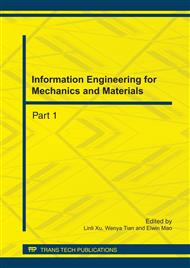p.271
p.276
p.279
p.284
p.288
p.294
p.298
p.302
p.307
Numerical Calculation of Throttle Nozzle Diameter Influence on Downhole Choke Flow Field
Abstract:
With calculation results comparison of different throttle nozzle diameter value, This article analyses the flow field with throttle nozzle diameter variety of 1.0mm, 2.0mm, 2.4mm, 2.6mm, 2.8mm, 4.0mm, while the other parameters take same value (such as the inlet pressure is 20mpa, the outlet pressure is 10MPa, the temperature is 333k, and the well depth is about 2000m). the results present the influence upon downhole choke flow field including pressure, velocity, temperature distribution. The pressure field composed by minimum on the axis shows the pressure dropping change at the throttle nozzle outlet. Velocity field gives the maximum value of velocity and Mach number, which determines the flow field is subsonic or supersonic flow. With hydrate formation conditions, temperature field formed by minimum on the axis gives the existing judgment of hydrate formation under a certain condition. With the throttle nozzle diameter increasing, the outlet flow maximum velocity increases, and the differential pressure before and after nozzle becomes larger, which means the pressure drop effect is better. The downhole choke design of throttle nozzle needs to consider the combination effects of pressure drop and temperature drop. These parameters provide reference for downhole choke structure design and operating performance improvement.
Info:
Periodical:
Pages:
288-293
Citation:
Online since:
July 2011
Authors:
Price:
Сopyright:
© 2011 Trans Tech Publications Ltd. All Rights Reserved
Share:
Citation:


